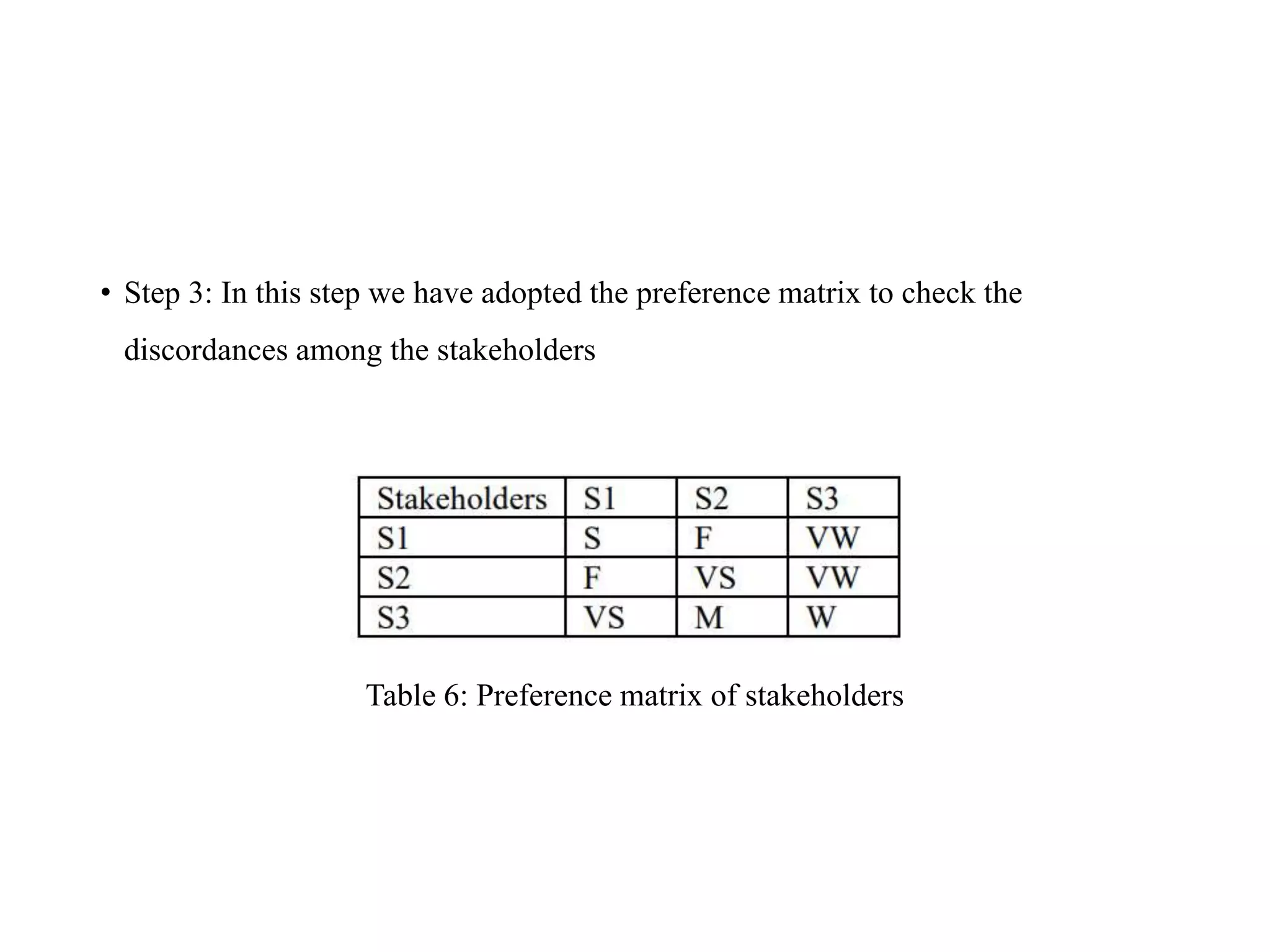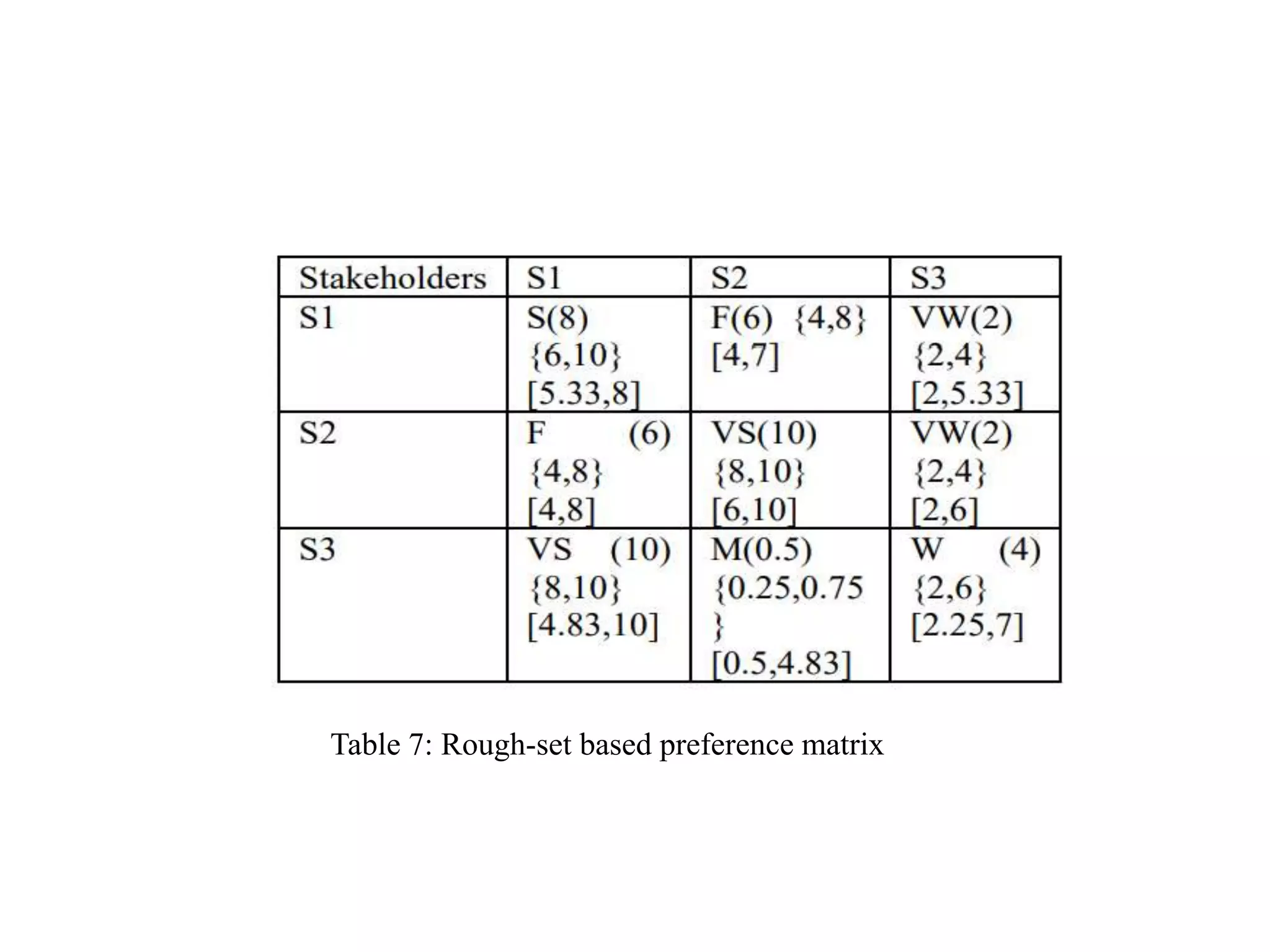The document presents work on an intelligent approach for goal-oriented software requirements analysis. It discusses objectives like analyzing research issues in software goal models and prioritizing stakeholders. A method called RAGOSRA is proposed using rough set theory to analyze software requirements. A case study is presented to demonstrate applying RAGOSRA which involves identifying goals, evaluating them by stakeholders, computing ranking values using rough set concepts, and analyzing goals. The work contributes a method using rough sets for goal-oriented requirements analysis.





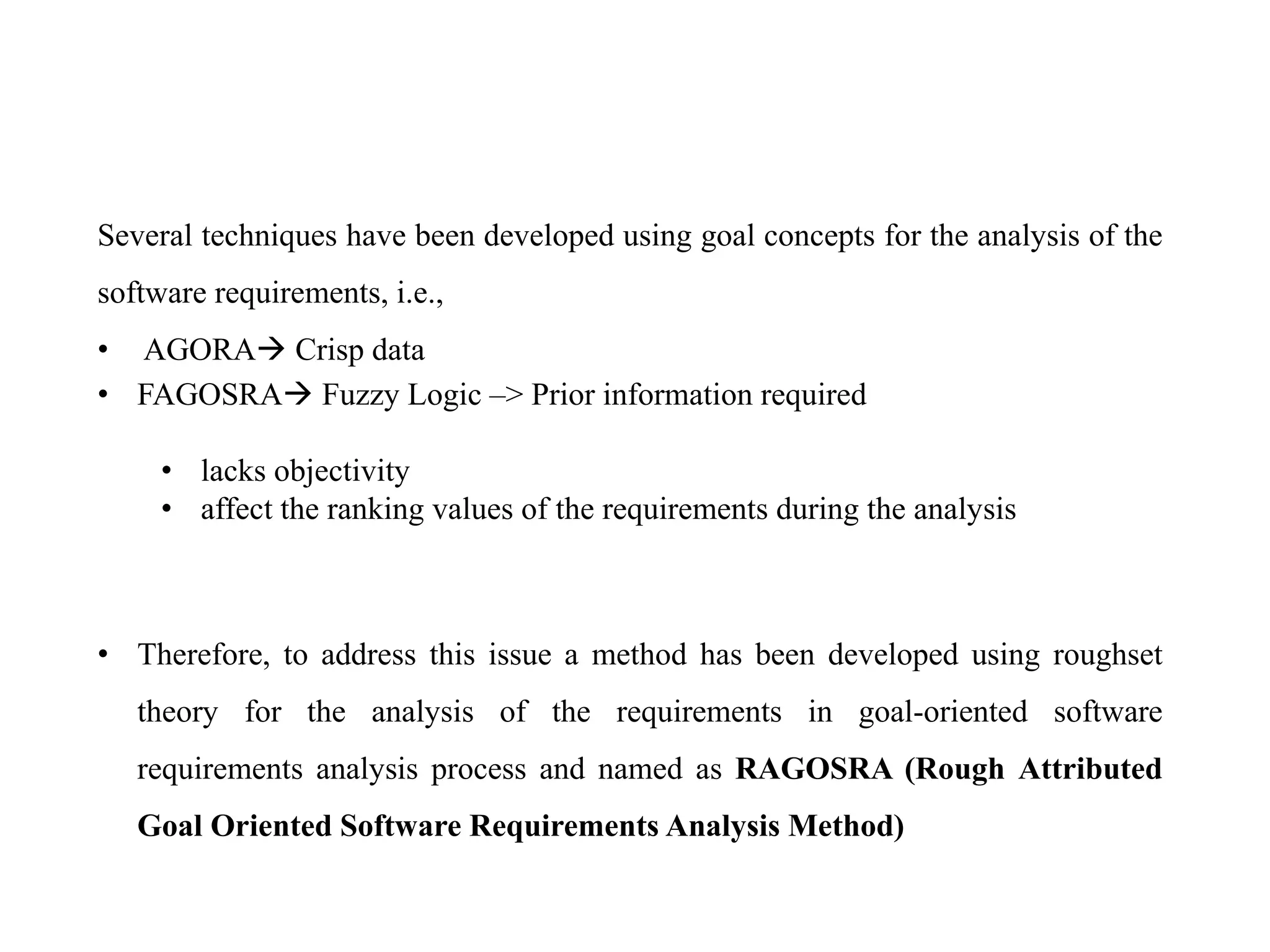
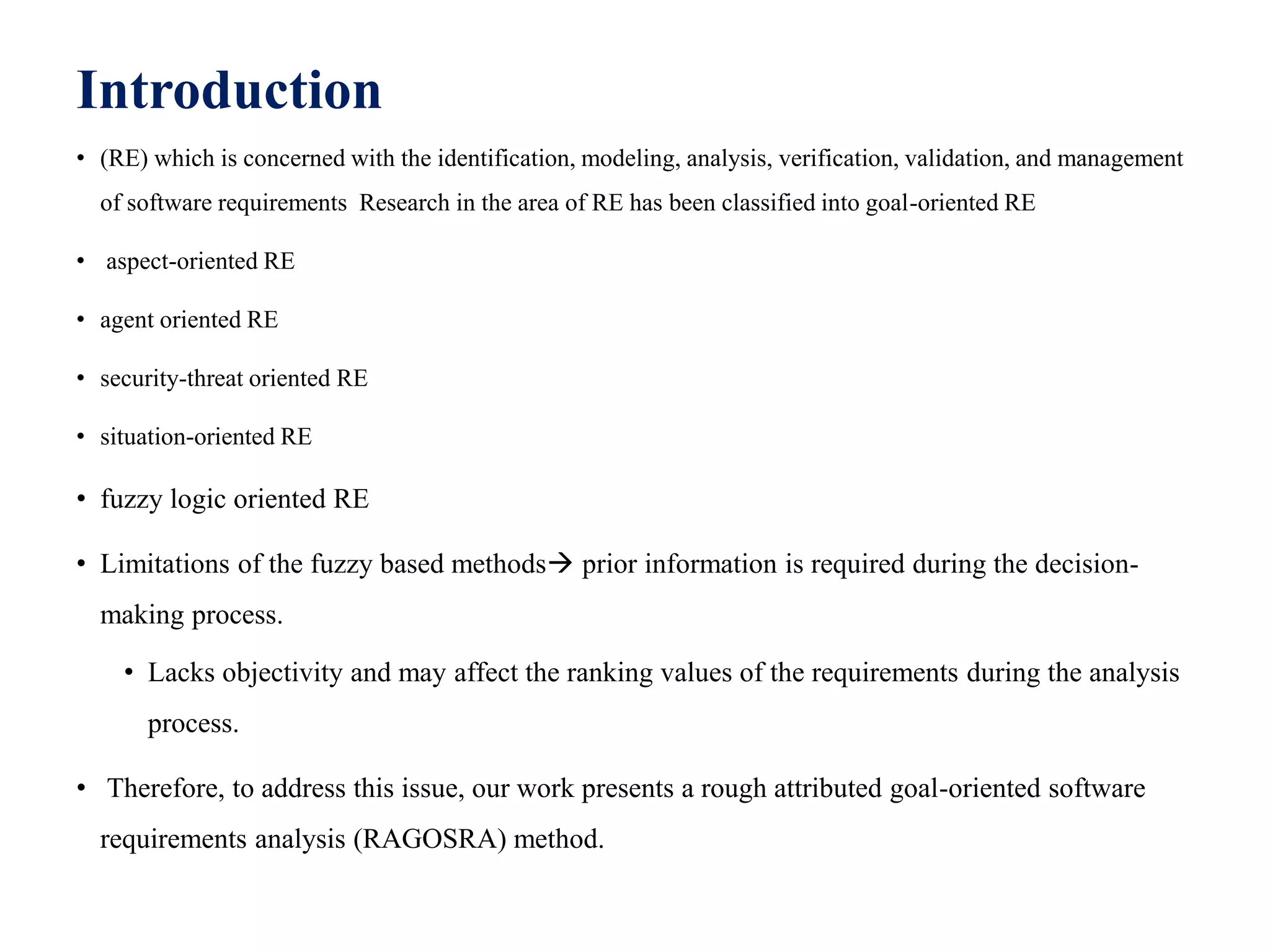

![Related work
Goal-oriented requirements analysis methods
S. No. GORA Methods (Year) Authors Data used in
analysis
1 KAOS (1990) Lamsweerde [9] Crisp data
2 NFR framework (1992) Mylopoulos et al. [10] Crisp data
3 AGORA (2002) Kaiya et al. [12] Crisp data
4 PRFGORE process (2014) Sadiq and Jain [8,14] Fuzzy data
5 FAGOSRA (2016) Mohammad et al. [13] Fuzzy data
6 GOASREP using AHP/2016 Garg et al. [15] Crisp data
7 FLDSREP/2022 Javed et al. [16] Fuzzy data
Table 1: Goal-oriented requirements analysis methods](https://image.slidesharecdn.com/racapril2022-230119074326-aa54f829/75/IS-pptx-9-2048.jpg)
![Related work…
An insight into rough-set theory
Rough set theory,
• introduced by Zdzislaw Pawlak in the early 1980s
• deals with vagueness and uncertainty
• does not need any preliminary or additional information about data
• Based on sets—lower and upper approximations
• 𝐹𝐴 = {𝑥 ∈ 𝑈𝑜𝐷:[𝑥]𝐹 ⊆ 𝐴} (1)
• ̅𝐹𝐴 = {𝑥 ∈ 𝑈𝑜𝐷: [𝑥]𝐹 ∩ 𝐴 ≠ ∅} (2)](https://image.slidesharecdn.com/racapril2022-230119074326-aa54f829/75/IS-pptx-10-2048.jpg)


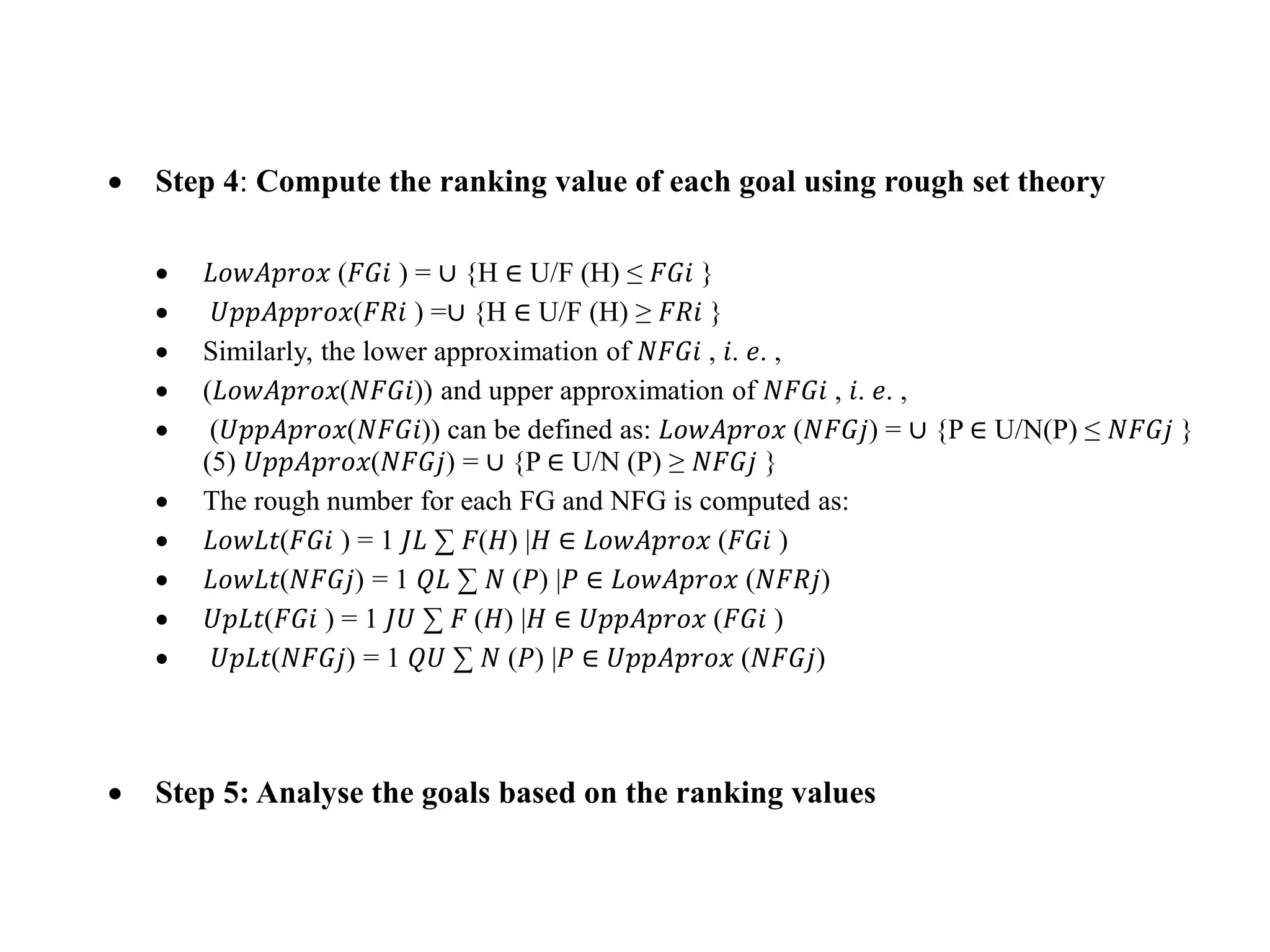

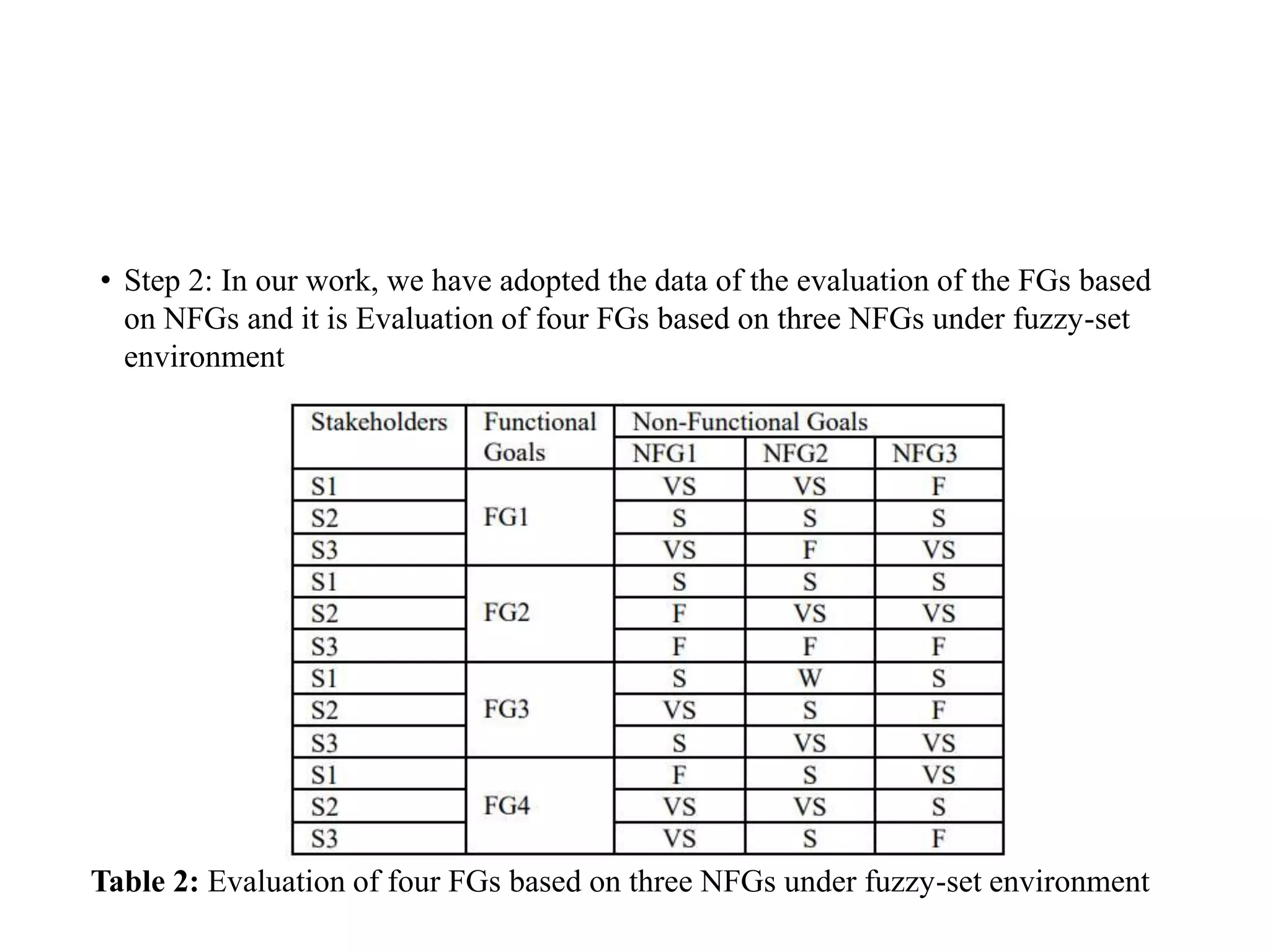
![Table 3: Evaluation of four FGs based on three NFGs under rough-set environment
Note: (), {}, and [] represent crisp values, TFNs and rough numbers, respectively.](https://image.slidesharecdn.com/racapril2022-230119074326-aa54f829/75/IS-pptx-16-2048.jpg)


